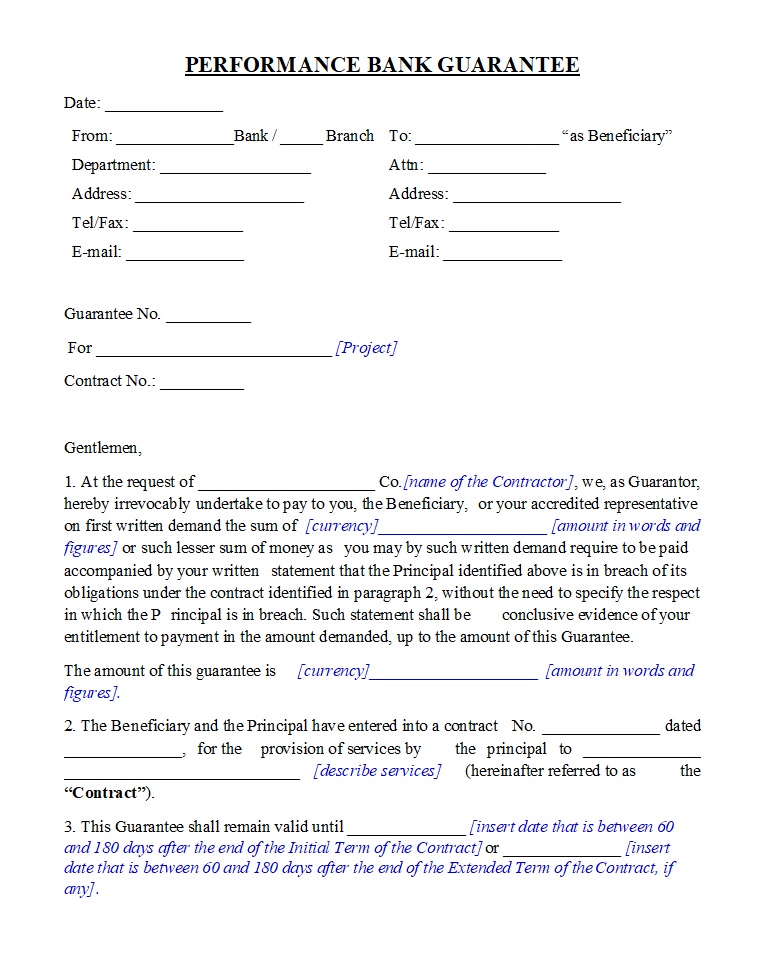Estimated reading time: 3 minutes
Introduction
A Performance Bank Guarantee (PBG) is a financial instrument issued by a bank on behalf of a contractor to assure the project owner that contractual obligations will be fulfilled. It is widely used in construction, engineering, infrastructure, and government procurement projects where the risk of non-performance can result in significant financial loss.
By issuing this guarantee, the bank undertakes to compensate the project owner if the contractor fails to deliver according to the terms of the contract, thereby ensuring financial protection and project continuity.

Purpose and Scope
The principal purpose of a Performance Bank Guarantee is to safeguard the beneficiary, usually the project owner, against the contractor’s default, delay, or inadequate performance. It serves as a form of financial security, giving the beneficiary confidence that funds will be available if contractual performance is not achieved.
Typically, the guarantee amount ranges between 5% to 10% of the total contract value, remaining valid until the completion of the project or full discharge of obligations. Once performance is verified and accepted, the beneficiary issues a release letter, and the bank cancels or returns the guarantee to the contractor.
In essence, the PBG transforms a contractor’s promise into a bank-backed assurance, strengthening trust and enabling the execution of high-value, risk-sensitive contracts.
Legal and Regulatory Framework
Performance Bank Guarantees are governed by both contract law and international banking rules. Globally, the ICC’s Uniform Rules for Demand Guarantees (URDG 758) and, in some cases, the UCP 600 provide a standardised framework for their issuance and enforcement.
A valid guarantee must include:
- Identification of parties (Applicant, Beneficiary, and Issuing Bank)
- Guarantee amount and currency
- Expiry date or validity condition
- Performance obligations are referenced to the underlying contract
- Terms for demand and payment
When a beneficiary lodges a claim, the bank must honour the demand if it complies with the guarantee’s terms, regardless of any disputes in the underlying contract, a principle known as the independence of the guarantee.
Types and Variations
Depending on project and jurisdictional requirements, several types of performance-related guarantees exist:
- Advance Payment Guarantee (APG): Secures the repayment of advance funds if the contractor fails to commence or complete work.
- Bid Bond: Ensures that a bidder will enter into a contract if awarded.
- Retention Money Guarantee: Protects the owner for a defined period after project completion.
The PBG may be conditional (subject to performance certification) or unconditional/on-demand, where payment is made immediately upon a compliant demand from the beneficiary.
Practical Use and Risk Considerations
For contractors, obtaining a PBG requires strong creditworthiness since the issuing bank assumes a contingent liability. Banks typically charge fees proportional to the guarantee value and may require collateral or a counter-guarantee.
For project owners, PBGs reduce the risk of project interruption and secure financial remedies for non-performance. However, misuse or unfair invocation of guarantees can lead to legal disputes, making clear drafting and invocation procedures essential.
For further reference, you may review the following related templates:
- Advance Payment Guarantee (APG) – ver. 1
- Advance Payment Guarantee (APG) – ver. 2
- Payment Bank Guarantee (BG) – ver. 1
- Corporate Performance Guarantee
- Performance Bank Guarantee – PBG (for Supply Equipment and Materials)
References (2023–2025)
- International Chamber of Commerce (ICC). (2019). Uniform Rules for Demand Guarantees (URDG 758).
- World Bank. (2024). Infrastructure Finance and Risk Mitigation Report.
- Asian Development Bank (ADB). (2023). Handbook on Contractual Guarantees and Project Security Instruments.
- International Trade Centre (ITC). (2023). Practical Guide on Letters of Credit and Bank Guarantees.
- OECD. (2024). Risk Management in Public Procurement.
has been added to your cart!
have been added to your cart!



